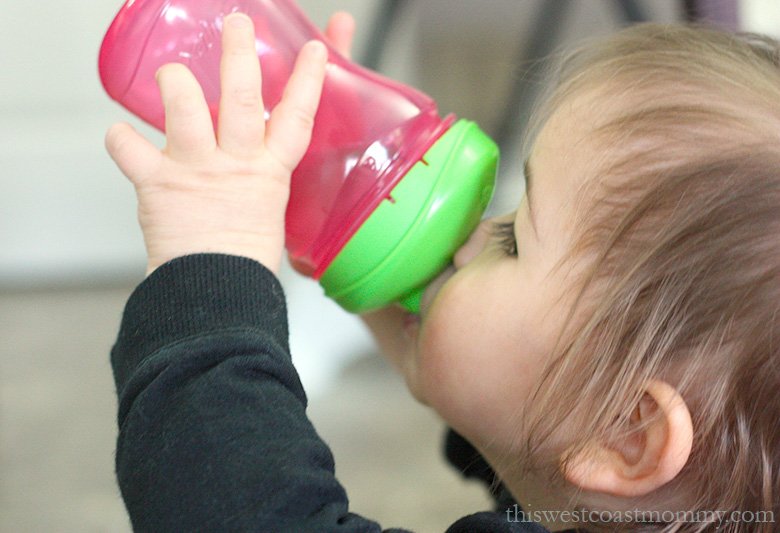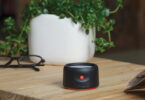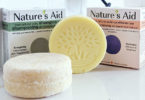Eventually it happens to the best of babies. Your sweet little toddler wakes up one morning cranky and fussy and not at all her usual sweet and cheerful self. She isn’t hungry, teething, or feverish. What gives? You start thinking back, and you realize it’s been a couple of days since you changed a stinky diaper. Hmm.
As your baby transitions from a strictly liquid diet onto solids, new foods can gum up the works. Generally, if your child starts pooping fewer than three times a week (or less than their normal frequency) and their stools are hard and painful to pass, they’re constipated. Too much processed food or dairy, a change in their routine, or potty training woes can also lead to constipation. In most cases, constipation is not a serious medical issue, but it sure is uncomfortable for your baby and for you.

Instead of turning to medicines, suppositories, or laxatives right away, try these natural options first to help relieve your toddler’s constipation.
1. Water
Start by increasing their water intake. Dehydration is one of the most common causes of chronic constipation, and drinking more water means your child’s large intestine will need to absorb less water from their waste, leaving their stool softer and easier to pass.

2. Fiber
Try adding more high-fiber foods to their diet like artichokes, peas, broccoli, raspberries, blackberries, dried stone fruit, beans, and whole grains. Soluble fiber (found mainly in fruit, nuts, and beans) absorbs water which helps keep stool softer and larger so it can pass easier. Insoluble fiber (seeds, vegetables, grains) also helps keep things moving by adding bulk.
3. Sorbitol
Sorbitol is a sugar alcohol and natural laxative found in certain fruits. The best natural sources of sorbitol include pears, plums, peaches, nectarines, and apricots. Dried fruit contains even more sorbitol – consider prunes, dried peaches, dried apricots, dried apple, or dried dates.

4. Fruit Juice
Offer diluted fruit juice, about half water and half juice. Prune juice is a time-honoured choice because of its high sorbitol content, but pear juice or apple juice are good options if your toddler doesn’t like the taste of prune juice.
5. Exercise
Exercise isn’t just for fitness and fun. It gets everything moving, including their bowels. Run, dance, get outside!

6. Bicycle Legs
For younger babies, try laying them on their backs and moving their legs in a bicycling motion to help get things moving.
7. Tummy Massage
Use a hypoallergenic oil like olive or chamomile oil and gently but firmly massage her abdomen with your fingertips in a circular, clockwise motion to help move things along.

8. Better Bathroom Habits
Encourage your child to visit the bathroom regularly throughout the day, especially after eating. Encourage them to sit for at least 10 minutes (you can read stories to help pass the time). It may also be helpful to place a stool or Squatty Potty at the base of the toilet to keep their little legs from falling asleep and to give them some leverage when bearing down.
9. New Diaper
If all else fails, cloth diapering moms everywhere know that a sure-fire way to get them to poop is to put them in a brand new diaper. 😉

The good news is that constipation is rarely serious. But if constipation last two weeks or longer, see your pediatrician to rule out possible medical reasons for getting stopped up. If your child is feverish, vomiting, stops eating, starts to lose weight, or has blood in her stool visit your doctor.
Disclosure: This post contains affiliate links. This West Coast Mommy is a participant in the Amazon Services LLC Associates Program, an affiliate advertising program designed to provide a means for sites to earn advertising fees by advertising and linking to Amazon.com. I will receive a small commission if you purchase through my link, at no additional cost to you. This income helps pay for the operating costs of my website – thank you for your support!








As an autism mom I know constipation well. We love to use real pumpkin purée. Not the pie stuff but a can of real pumpkin and any cake mix then bake into muffins!
Hydration and excercise are the most beneficial to us.
Great idea about the pumpkin. Thanks for sharing!
I’m going threw this right now thank you for the super helpful info
thanks for the post i learn so many tips
Bicycling the legs always worked so well for my girls! The clean, new cloth diaper always seemed to work so well too!! haha! Sometimes I will had a lime or some type of flavoring to my girls’ water to encourage them to drink more.
Oh yes, lime water is so yummy! I’ve done raspberries too.
Literally EVERY TIME we put a brand new diaper on she poops in it. No fail!